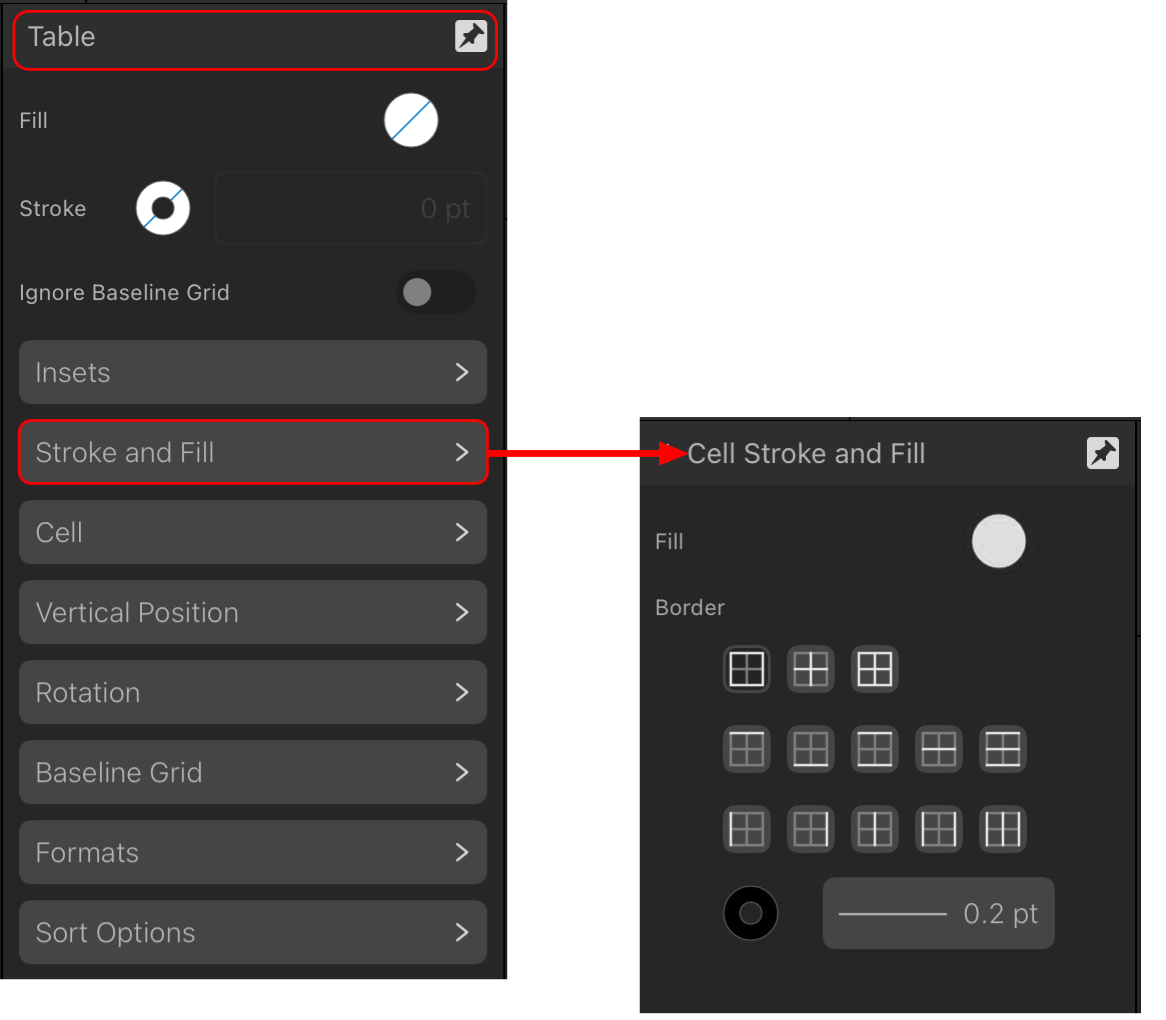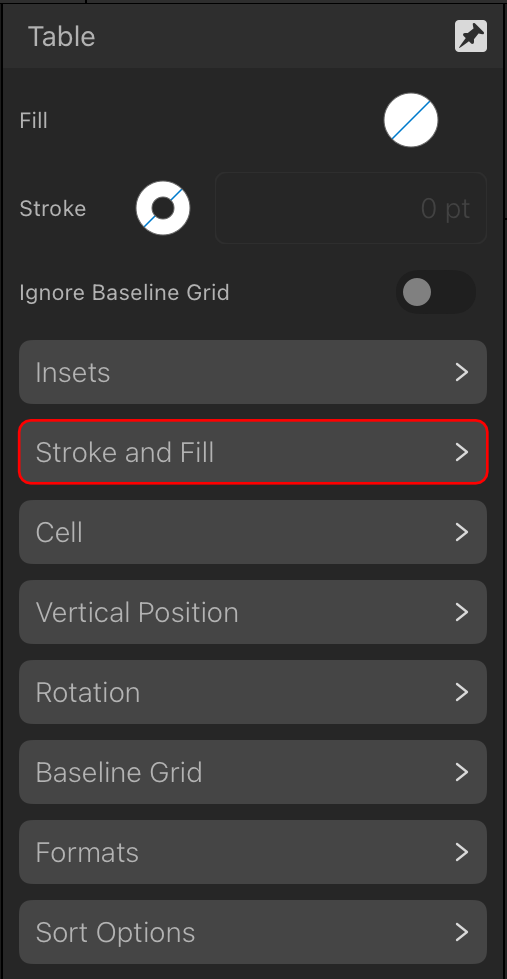
Minus44
Members-
Posts
457 -
Joined
-
Last visited
Recent Profile Visitors
3,620 profile views
-
 Minus44 reacted to a post in a topic:
New IOS26 more like a mac, will Affinity Apps still work?
Minus44 reacted to a post in a topic:
New IOS26 more like a mac, will Affinity Apps still work?
-
 Minus44 reacted to a post in a topic:
Publisher 2 frustrations
Minus44 reacted to a post in a topic:
Publisher 2 frustrations
-
 Minus44 reacted to a post in a topic:
Publisher 2 frustrations
Minus44 reacted to a post in a topic:
Publisher 2 frustrations
-
@walt.farrell thanks again for your help with this, as well as the motivation to report it in the proper bug sub-forum. I did so, and the staff has acknowledged and logged it as a bug. Hopefully it gets some attention in the near future.
-
Affinity Publisher 2 tables won’t retain fill color
Minus44 replied to Minus44's topic in V2 Bugs found on iPad
Thank you very much for logging this with the developers, @NathanC. I hope it helps. Having use of the Color Wheel is really important. I haven’t been able to reproduce the crashing issue. Perhaps that specific problem was cleared up by restarting my iPad and restarting AfPub2. -
ISSUE Create a new table in AfPub 2. To change the fill color of several cells in the first row at the top of the table, go to Table > Stroke and Fill, and use the Color Wheel to make precise color adjustments. The fill color seems to change the fill color as desired for those cells; however, when tapping anywhere else in the table, the change doesn’t stick. It changes back to ‘no fill’ again or whatever the original cell color was. To emphasize the point, this problem happens when using the Color Wheel. (See screenshots of the Stroke and Fill dialog, as well as the attached video to see the steps I tried.) WORKAROUND If I switch away from the “Colors” dialog (e.g., Color Wheel, HSL Sliders, RGB Sliders) and use the “Swatches” dialog, the choice of fill color sticks. 🤔 This is not at all optimal. Swatches are OK, but if I need a more precise method for choosing my fill color, I need access to the “Colors” panel. NOTE: I seem to recall this being an issue a longgg time ago, either early in AfPub2 or perhaps even earlier. GEAR SPECS Affinity Publisher Version: 2.6.3.3322 (App Store) Operating System: iPadOS 18.5 iPad Pro (11-inch) (4th generation) ADDITIONAL ISSUES Publisher frequently crashes as I keep attempting changes to the fill and stroke colors. Sometimes, but not always, a similar issue happens when trying to change the cell stroke colors or thickness. This is a much less often than the cell fill color issue described above. SCREENSHOT AND VIDEO ScreenRecording_06-14-2025 16-22-20_1.mov
-
 Minus44 reacted to a post in a topic:
Publisher 2 frustrations
Minus44 reacted to a post in a topic:
Publisher 2 frustrations
-
 Minus44 reacted to a post in a topic:
Publisher 2 frustrations
Minus44 reacted to a post in a topic:
Publisher 2 frustrations
-
Thank you for testing it, @walt.farrell. Here is some info in case it helps with making a bug report: Affinity Publisher Version: 2.6.3.3322 (App Store) Operating System: iPadOS 18.5 iPad Pro (11-inch) (4th generation)
-
 walt.farrell reacted to a post in a topic:
Publisher 2 frustrations
walt.farrell reacted to a post in a topic:
Publisher 2 frustrations
-
 Oufti reacted to a post in a topic:
Publisher 2 frustrations
Oufti reacted to a post in a topic:
Publisher 2 frustrations
-
I noticed the same thing. Oddly, if I switch away from the “Colors” tools (e.g., Color Wheel, HSL Sliders, RGB Sliders) and use the “Swatches” instead, the choice of fill color sticks. 🤔 This is not at all optimal. Swatches are OK, but if I need a more precise method for choosing my fill color, I need access to the “Colors” panel. I seem to recall this being an issue a longgg time ago, either early in AfPub2 or perhaps even earlier.
-
Sure thing. Here you go. I hope this illustrates a bit more clearly what I’m seeing and doing. ScreenRecording_06-14-2025 16-22-20_1.mov
-
Is this perhaps a bug? I’m also finding that Publisher frequently crashes as I keep going back to attempt changes to the fill and stroke colors.
-
Eventually I’m going to address the borders. But for now, I’ve selected only two of the top-most cells and wish to fill those with a color. Whilst selecting the color, those cells preview the change I’m trying to make. However, when tapping anywhere else in the table, the change doesn’t seem to stick—and it changes back to ‘no fill’ again. Very frustrating, but I’m sure I’m missing something simple.
-
@Alfred, can you please help me with a similar question? In my case, I’m trying to do something that ought to be quite simple—I want to change the fill color of two cell at the top of the table. I suppose some software would consider this a header or title row. I go to the set of Table > Stroke and Fill. I change the fill color as desired for those cells. But when I go back to the table and tap on any other element to continue with the design, the fill color of the cell is undone. What am I missing? Is there some sort of default that I need to work around? 🤷♂️
-
 Minus44 reacted to a post in a topic:
CURRENT LAYER AND BELOW BUTTON
Minus44 reacted to a post in a topic:
CURRENT LAYER AND BELOW BUTTON
-
 Minus44 reacted to a post in a topic:
CURRENT LAYER AND BELOW BUTTON
Minus44 reacted to a post in a topic:
CURRENT LAYER AND BELOW BUTTON
-
 Minus44 reacted to a post in a topic:
CURRENT LAYER AND BELOW BUTTON
Minus44 reacted to a post in a topic:
CURRENT LAYER AND BELOW BUTTON
-
 Minus44 reacted to a post in a topic:
is there a more intuitive way to rotate canvas?
Minus44 reacted to a post in a topic:
is there a more intuitive way to rotate canvas?
-
 Minus44 reacted to a post in a topic:
is there a more intuitive way to rotate canvas?
Minus44 reacted to a post in a topic:
is there a more intuitive way to rotate canvas?
-
SUGGESTIONS Save sharpening as your final step. Otherwise, your image will build up aberrations that will difficult to eliminate later in your workflow. Use a lighter touch on those solar prominences. What you usually would want is retention of fine feathery detail for these transient structures, not harsh areas of solid color. I'm still working on my images. I find that I often spend a lot of time editing and then need to walk away from it for hours or even several days of time. I'm at the "several days" part. You should be VERY PROUD. This was also my first total solar eclipse. Although I'm a professional photographer for many years now, photographing and processing a total solar eclipse is its own sort of beast. Nevertheless, I was fairly happy with my first processing effort—at least my friends say they like it. But I can easily see the problems with it, most likely alignment issues. So I'm going to make another attempt at processing them before posting here. I even caught Bailey's Beads at 3rd contact (they weren't very visible for me at 2nd contact). Even though I knew that I had a 5-7 second window to capture them I was shocked at how quickly the window passed by.
- 33 replies
-
- solar eclipse
- equations
-
(and 4 more)
Tagged with:
-
 DutchieOnABudget reacted to a post in a topic:
Solar Eclipse Image Processing w/ Photos
DutchieOnABudget reacted to a post in a topic:
Solar Eclipse Image Processing w/ Photos
-
It often takes time and patience to get a reply, especially if the originators of the post provided this information a year or more prior to our questions. I have no doubt that the techniques required actually exist within Affinity Photo, even if the specific tools are located in a different place than in Photoshop. Ultimately the technique might even be easier, as is typically the case with Affinity Photo.
- 33 replies
-
- solar eclipse
- equations
-
(and 4 more)
Tagged with:
-
 DutchieOnABudget reacted to a post in a topic:
Solar Eclipse Image Processing w/ Photos
DutchieOnABudget reacted to a post in a topic:
Solar Eclipse Image Processing w/ Photos
-
Very well done, particularly with this being your first attempt at it! You also ensured that your approach to gear and the images you wanted to make were doable and well-planned. This eclipse was my first one, also. I now know that I was either TOO ambitious in what I was trying to accomplish, or should have trained some additional hands to help out, or I should simply have rehearsed even more. Still, I accomplished more than I hoped. I will share some of my results when able.
- 33 replies
-
- solar eclipse
- equations
-
(and 4 more)
Tagged with:
-
I agree with you there. Although I'm a pro photographer and have plenty of experience with the Affinity products among many others, eclipse photography and processing isn't quite like anything else. At all. And the adrenalin level during the shoot is through the roof—far higher than when I work for any high-end clients. 😅 If you have some input on what led you to success with your images, several of us just now finding this thread would really appreciate it. Fantastic work, particularly with your composites. I didn't have the opportunity to capture the basic sequences necessary to do anything like that. We were still on a very crowded highway attempting to reach our destination when the partial portion of the eclipse began. I can tell you put a lot into this. If you don't mind saying so, what lens focal length did you use to achieve the wide-field shot of the Sun across the sky? I'm also guessing you took one photo every four or five minutes as the Sun moved across the sky? Additionally, Capture One Pro is my raw image editor of choice as a professional photographer. However, on its own, it won't produce on its own what I believe you're looking for. For those sorts of images, the best approach is to stack a series of varying exposures. For a total eclipse of the Sun, this is a challenging art form. That's what I'm attempting to do, but using Affinity Photo 1.10 instead of Photoshop—which I no longer have. I'm hoping some of the good people here will be able to point me in the right direction for optimal results.
- 33 replies
-
- solar eclipse
- equations
-
(and 4 more)
Tagged with:
-
 DutchieOnABudget reacted to a post in a topic:
Solar Eclipse Image Processing w/ Photos
DutchieOnABudget reacted to a post in a topic:
Solar Eclipse Image Processing w/ Photos
-
 Alfred reacted to a post in a topic:
Solar Eclipse Image Processing w/ Photos
Alfred reacted to a post in a topic:
Solar Eclipse Image Processing w/ Photos
-
@Alfred, my friend, believe me—no one is kicking me harder than I'm kicking myself over this. The cruel irony is that I actually have one in my camera bag!! 😭😅 However, traffic was even more horrendous than we anticipated, and the crowding by other eclipse chasers was over the top. By the time we got to our destination and I got most of my equipment set up for my multiple projects, I completely forgot that I even had a remote shutter release—which I'd actually rehearsed using over and over again. I learned a lot from this first-timer eclipse experience. Everything that can possibly go wrong probably WILL go wrong if you don't have enough time to set up prior to the very brief moments of totality.
- 33 replies
-
- solar eclipse
- equations
-
(and 4 more)
Tagged with:
-
Solar prominences are completely visible to the naked eye in white light. They’re visible on the Sun’s limb when the much brighter disk of the Sun is completely obscured by the Moon during a total solar eclipse. In this configuration, the solar prominences aren’t competing against the rest of the Sun’s comparatively brighter disk. No dedicated H-alpha telescope required. With the 2024 total solar eclipse, there were several large prominences easily visible to the naked eye even without the use of a telescope or telephoto lens. My unaided eyesight is poor, so when a nearby 10-year-old child asked, “What are those pink things around the Sun and Moon?” I was thrilled! When my eyes finally focused—much more slowly than the child’s—I could also see these large pink spots. So the prominences this year were unusually large and plentiful. I counted maybe four or five of them. Three are particularly big ones.
- 33 replies
-
- solar eclipse
- equations
-
(and 4 more)
Tagged with:






